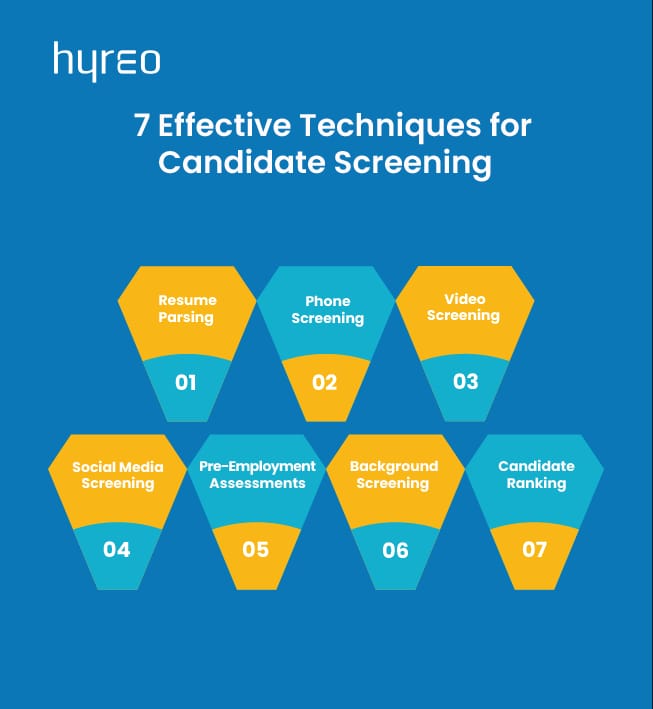Key highlights
- Candidate screening is about finding the best person for the job while bringing down the number of applicants with the help of the right tools
- This process helps in improving the quality of hire while making the process easier and even faster
- Recruiters can screen candidates through social media, applicant tracking systems, as well as background checks
You posted a job on LinkedIn and received more than 200 applications in a day. You are pleased with yourself and know that you will find your ideal candidate among these profiles. But sorting through the pile seems intimidating. In the larger scheme of things, this task of finding compatible profiles can wear you out. This is where candidate screening can help in finding the best candidate
Candidate screening is the process of narrowing down the number of applications to keep relevant profiles for further evaluation. This initial step is important in the hiring process since it helps you weed out profiles that don’t fit well.
A good screening process can help recruiters save time and costs in hiring, especially avoiding the costs of an incompatible hire. The lack of a good screening method can end in getting the wrong fit to the next round or, worse – missing out on the right fit!
6 reasons why candidate screening is critical in 2023
Candidate screening can be roughly bisected into understanding the candidate’s skills and attributes (through their experience as well) and whether those attributes meet the job criteria.
Screening is beneficial to recruiters and organizations in many ways. Here are some reasons:

#1 High-volume management
Some industries and roles have high turnover rates and, therefore, a large influx of applications. Entry-level and executive roles receive a lot of applications. Kristen Gerencher of MarketWatch stated, “Jobs that involve higher customer contact for relatively low wages, such as entry-level retail, hospitality, telemarketing, and inbound call centres, have high attrition.” Other skilled jobs such as childcare, nursing, and accounting also have high turnover due to stressful work conditions.
The need to fill these roles is urgent. Screening helps in ensuring high potential candidates fill these positions, keeping constraints in mind.
#2 Improved quality of hire
Volume hiring is a tiring task since it requires you to be quick and efficient at the same time, working with many constraints. Similarly, hiring for niche profiles or leadership roles also needs you to be thorough and ensure that you select the most compatible profiles.
Screening can allow you to set a benchmark for significant roles and improve the quality of hires.
#3 Better interview: offer ratio
Instead of shooting darts in the dark to find out which of the candidates fit the role, screening ensures a better interview: offer ratio. Every profile has all types of candidates applying for it – skilled, interested, inexperienced, or passive.
Screening helps you filter out profiles that are not apt for the role, considering the skill and urgency to fill the role. The selected candidates stand a better chance of getting through to further rounds and being offered the role.
#4 Faster and easier than interviews
Since initial screening doesn’t require an elaborate interaction with candidates, it helps save you time and effort. First-level screening is done by matching some basic non-negotiable criteria. For example, location, education, salary range, etc.
The next level of screening is usually the experience in a certain domain or skill and expertise etc. Certain roles need a plug-and-play candidate. This means that if they have worked in a similar role before, they would need less training and be able to be productive almost immediately.
Thus, screening reduces the time to filter out candidates if you are certain about your criteria.
#5 Reduced bias
As humans, we are all prone to make assumptions about others. Often, this happens unknowingly. Screening helps you reduce these assumptions by consciously focusing on skills and other criteria for selection. This also helps you increase diversity and inclusion within the organization.
Reviewing the nature of your screened profiles will also give you insight into any biases you may have so that you can overcome them.
#6 Reference checks
Reference checks are a great way of screening candidates for pivotal and leadership roles in the company. They can be done through references that the candidate provides or through your sources.
Previous employers can verify or give you information about the candidate that can help you decide to further their profile.
You could confirm the following details through reference checks:
- Tenure of employment
- Reasons for leaving
- Unexplained absences or gaps
- Performance feedback
- Strengths and weaknesses
- Interpersonal equations
- Conduct feedback
- Leadership styles, where applicable
Tools for Candidate Screening
Screening is not only a chance for recruiters to evaluate and filter candidates but also for the candidates to understand the organization. Screening can be Moments of Truth for candidates while interacting with the organization.
Many tools are useful for candidate screening:

#1 Resume parsing
This is invariably done by all recruiters, including third parties. Being the first cut of evaluation, resume screening involves basic criteria match. Many organizations use technology to make this process easier and more efficient. Technology is also useful in volume hiring.
Tools like Applicant Tracking System (ATS) match the keywords in the Job Description to words in a candidate’s resume.
To avoid losing out on potential candidates, the software would have to include synonyms of several skills and attributes. It would also require the candidate to tune their resume to match the set criteria.
#2 Phone screening
Phone screening can be done in two ways – through text screening or a phone call.
Texting is a semi-formal way of interaction between recruiters and candidates. Text screening is done through ATS, where interactive text messages are sent to candidates. Candidates can also text a keyword on a designated number or click on a link to access job posts. Screening questions are asked, and interviews are scheduled if candidates fit the role.
Many platforms also offer interactive AI or chatbots to resolve queries of candidates around the clock, on-demand, creating positive Moments of Truth.
Short phone calls are also used for screening. Lasting from 5 to 10 minutes, screening over a phone call can vet basic criteria and also get an inkling about how invested the candidate is in the job role.
#3 Video screening
Video screening is one-way (also called video resume) or two-way (video interview). One-way video screening requires candidates to record a short video answering some basic questions. The advantage of the one-way video screening is that recruiters can review it many times. A two-way video screening is a short conversation to understand the candidate better.
In a video screening, many intangible attributes can be evaluated by the experienced eye. Some common aspects that can be evaluated are:
- Communication – Fluency, articulation, tone of voice, body language
- Confidence
- Preparation with the responses
#4 Social media screening
Social media screening using the candidate’s social media presence to understand more about their hobbies, likes, opinions, interests, and social contributions, if any. Understanding the candidate on professional sites such as LinkedIn or technical communities like Stack Overflow or GitHub is more useful.
Sometimes, you may find useful information about social causes the candidate may be interested in. However, it may also lead to biases and prejudices about a candidate. Therefore, it is prudent to use this information wisely.
#5 Pre-employment assessment
Many organizations adopt automated pre-employment tests to screen candidates. These can be technical tests, aptitude tests, or basic skill evaluation assessments. Some companies get creative enough to include puzzles and riddles.
These tests are more objective since they show the skill quotient of a candidate. They also reduce the chance of bias.
Many companies also conduct group discussions or interviews to assess expected attributes like interpersonal skills, communication, demeanor, etc.
#6 Background Screening
Vetting the background of a candidate can happen in the initial stages or after the candidate has been offered the job. Background screening in the initial hiring stages must be done for significant roles and industries that have sensitive dealings. Background screening can help reduce the risk of a bad hire and, eventually, losses to the company.
Blanket criminal record checks and credit checks on potential employees are subjective as per the laws in different states. Many states allow these checks only if the job role demands it.
To avoid legal discrepancies while conducting background checks, it is better to engage a third-party verification company. These service providers understand the legalities and constraints of background verification.
Some common aspects that can be checked are:
- Education
- Certification
- Previous employment
- Drug and alcohol screening
#7 Candidate ranking
Objectivity in screening can be achieved when each of your screening methods can be made tangible as a score. Candidates can be ranked as per their scores. Cumulative scores can be matched against a benchmark for selection to further rounds.
However, for this to be possible, each of your screening methods must be made tangible.
Wrap Up
Candidate screening is a balancing act of limiting your candidate pool as well as ensuring that you get high-potential talent. This becomes trickier when there is an urgent need for filling positions or a large volume of applications. During these times, traditional screening methods may not work to your benefit.
Using ATS and similar technology to sift through your pile of potential candidates will make your hiring process more efficient. Over time, you will be able to identify what works best in your screening process and help you get high-potential candidates for your organization.
FAQs on Candidate Screening
How can you maintain effectiveness in candidate screening?
Being clear about your hiring criteria is the foremost important step in candidate screening. Divide your criteria into mandatory, negotiable/trainable, or optional. Being rigid about criteria such as academic qualifications, education from specific institutions, or experience may cause losing out on talent. Setting benchmarks for selection can also help, especially in volume hiring.
How can you promote your brand during candidate screening?
Every interaction a candidate has with the organization offers a Moment of Truth and helps them decide to associate with the organization. Right from the accessibility of application to a job to the demeanor of the recruiter, you will be building a strong image as an employer.




